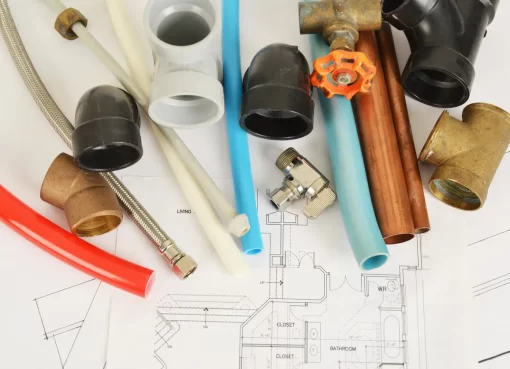Plumbing is any intricate system that carries liquids for various uses. It is used in industries and residential homes to carry both liquids and gases for domestic and industrial purposes. In addition, it also provides for the transportation of water from one place to another, whether for domestic or commercial purposes. The plumbing system also carries communications lines, electrical lines, natural gas lines, and telephone lines.
Plumbing generally uses drainage systems, pipes, valves, plumbing fixtures, and various other apparatuses for carrying liquid wastes to a vent. After the liquid is conveyed through the drain, it is diverted to a main sewer line, where it is further processed into water. The majority of homes have their own sewer systems. Some apartments, however, use gravity systems to transport waste water away from the home.
Homes that do not have septic systems can use either ground water or private sewage systems. The latter are more economical but require frequent pumping of sewage to prevent blockages. A drain field is typically circular, with bends in the drain pipes. Plumbers typically make a hole in the earth’s surface and insert a drain trap, then screw on a top-level lid, which keeps the contents from spilling over. A drain field is often complemented by a sewer trap on the same level, to prevent accumulated solids from going back into the drainage system.
Plumbing fixtures include common fittings such as taps, toilets, faucets, laundry tubs, and bathroom showers. PVC pipes and PVC joints are used extensively in residential plumbing systems. Older houses usually have cast iron or copper pipes, which are very sturdy. These pipes are insulated, so they do not leak water when the drain is blocked. However, if these pipes are not maintained properly, they may develop cracks or breaches over time, and water may seep in.
Most common fixtures have a drain valve that connects to a sewer main sewer line. This valve is usually a turn-type type that turns on whenever it detects the presence of any waste material. In older houses, this fixture is called a catch basin, which connects to the floor and is powered by an electric motor. Newer fixtures employ electronically operated waste valve boxes. Both types turn off when the drain reaches the floor.
When investigating a plumbing problem, it is important to look at the normal operating temperature of the drain or waste pipe. For example, figure 9.10: When the drain valve is open, warm water flows through the waste pipe from the main sewer line until it reaches a figure-eighty temperature. This figure represents the maximum permissible temperature for the liquid waste to be discharged. As water flows past this point, it turns cold and is unable to be discharged. This is the normal condition for most household wastes, although when there is an obstruction in the passage for the waste, or when a flushing action is in progress, these pipes may exceed the temperature range set forth in the previous paragraph.





